Search Results for 'Shilling'
24 results found.
O’Beirn’s Pharmacy, Henry Street
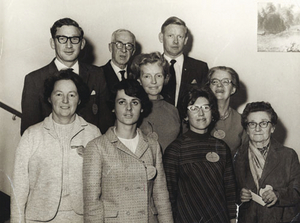
Our photograph today is of the Galway Committee of the Pharmaceutical Union who organised a national conference of their peers here in the early 1960’s. They are, back row; Paul Hayes, Lydon’s Pharmacy; Gussie Hayes, Portumna; Tommy Farmer a medical rep and also a qualified pharmacist who lived and worked out of Devon Park. In front are Eibhlín Ó Beirn, Ó Beirn’s Pharmacy, Henry Street; Mary Breen; Mary Barry who worked in Merlin Park; Judy Walsh, Spiddal; Síle Ó Beirn, Henry Street; Laura Cunniffe, William Street and Salthill.
The Dohertys of Carrigan were not ‘land-grabbers’

Galway Diary received the following statement from Adrian Martyn (great-great-great grandnephew of Peter Doherty, senior), who was shot dead at Carrigan, near Craughwell village on the night of November 2 1881. I am pleased to carry Adrian’s clarification:
The Galway Jute Spinning Company
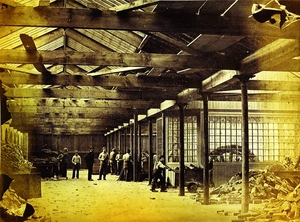
There seems to have been a few different names on this business but it was known locally as the bag factory. The chairman, Lieutenant Colonel James O’Hara, reported to the Select Committee on Industries Ireland (1884-85) on the company.
Newtownsmith c1870
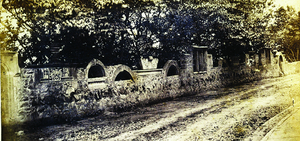
Newtownsmith was an important development outside the town wall on the northern side of the city in the late 18th and early 19th century. The project was undertaken by the governors of the Erasmus Smith Estate. In this suburb, the county courthouse was erected between 1812 and 1815, and a little later in 1824 the town courthouse was built. In 1823, it was objected to because there were several suitable sites for a new courthouse ‘immediately in the town’ and that it was ‘quite idle’ to lay foundations in Newtownsmith, or in any part of the suburb. Galway’s second bridge was completed in 1819 and it connected the courthouses with the new county and town gaols on Nuns Island which had been completed in 1810.
Calling Castlegar people

A report from the Educational Commission in Ireland in 1826 lists two hedge schools in the parish of Castlegar. The first of these was at Merlin Park, built by the landlord Mr Blake. The 40 boys and 20 girls who attended got free tuition. The second school was at Ballygurrane, a few hundred yards north of where Scoil Colmcille Naofa stands today. It was a thatched house which doubled as a church on Sundays. Each pupil paid one shilling and eight pence per quarter. There were 30 boys and 15 girls on the rolls. The thatched house was accidentally burnt down in 1827, and the school transferred to a stable in the village of Castlegar. Here, without desks or books, the teacher named Duggan from Bohermore taught his pupils as they sat around on stones as seats. Each morning he rode out on his donkey from Bohermore. His salary depended on the few pence he got from his students. He taught the three Rs through the medium of English.
Edward VII in Galway, 1903
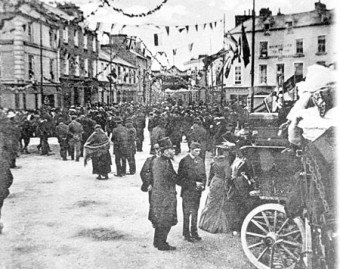
At the beginning of the last century, the Prince of Wales would have been one of the most famous personalities known to most Irish people. He had been to County Galway on a few occasions hunting, but when it was announced he was going to make an official visit, it aroused very mixed emotions. There were a lot of objections locally, led by an umbrella group known as the National Council. They disrupted preparatory meetings by shouting and heckling. Nationalists were not impressed either and other objectors included Edward Martyn, WB Yeats, Maud Gonne, and George Moore.
A royal visitor in ‘Pollok’s Time’
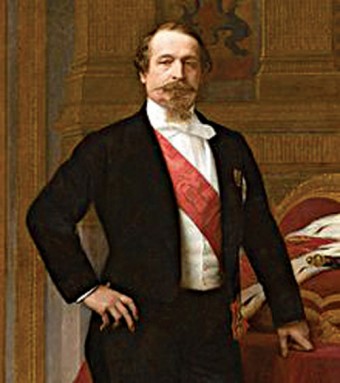
Earlier this year Galway Diary discussed the evictions implemented by Marcella Netterville and John Gerrard on their 7,000 acre estate at Ballinlass, near Mount Bellew Co Galway. In 1846 more that 400 families were heartlessly thrown out on the road, without any compensation. The land was being cleared to fatten cattle, which would have been far more profitable than tenants; many of whom, as the Great Famine tightened its terrible grip, were unable to pay their way. The Times of London famously commented that the Ballinlass evictions showed ‘the sublime indifference to social considerations of which no one but an Irish landowner is capable.’
Books on my table
Despite Liam Mellows and his men answering the call to arms, and for five days to have caused mayhem in the Oranmore and Athenry areas, Galway was slow to realise that the Easter Rising 1916 was to be a permanent affair. The town was known as a ‘showneen town’, that is a town with a close allegiance to the British way of doing things. This was mainly because of the status of having a major army barracks on its doorstep. The army was an important purchaser of supplies from the town merchants; and many local people were soldiers, or had husbands or boyfriends who were in the army.
Ten things an Irish woman could not do in 1970
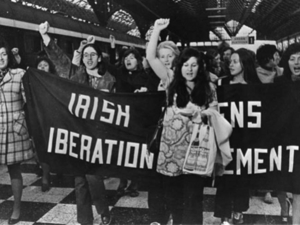
What dominated our news and much of our conversations during the 1970s (at least in the early years), was the deteriorating crisis in Northern Ireland. When I think of that decade I remember the initial hope that something would be settled quickly rather than letting it drag on fuelled by appallingly bad political decisions, thuggery, and deeply imbedded hatred. Seamus Heaney remarked that in the early 1970s ‘there was a promise in the air as well as fury and danger’. But in Northern Ireland any nervous sense of hopeful expectation quickly soured; as Heaney recalled: ‘Soon enough it all went rancid.’ In John Montague’s poem The Rough Field, he observes: ‘In the dark streets, firing starts.’
Through the glass darkly
In Act One of Shakespeare’s Merry Wives of Windsor, a play, so legend has it, Queen Elizabeth personally commissioned because she so enjoyed the character of Sir John Falstaff in Henry IV, 1& 2, we meet Master Abraham Slender who has come to court the young and lovely Mistress Anne Page. As he hesitates at the door, he laments, “I had rather than 40 shillings I had my book of Songs and Sonnets here.” The joke here, for Shakespeare’s audience, concerns the name of the book Slender mentions – Songs and Sonnets.

